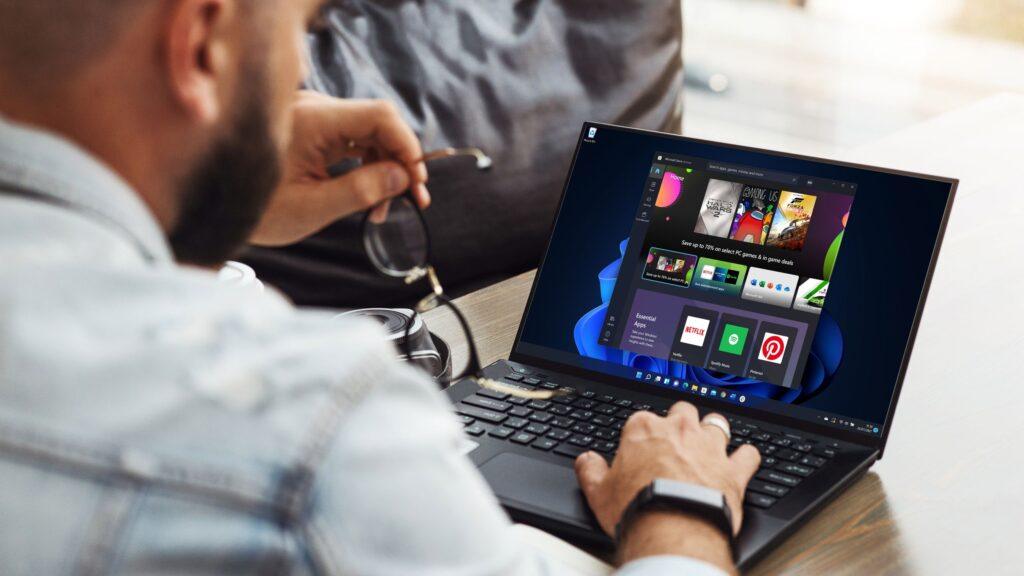- Microsoft just rolled out two new preview builds for Windows 11
- One of these improves file explorer in dark mode, and another increases its performance
- There’s also a useful change to some taskbar flyout panels, but it’s not the big taskbar move some people have been clamoring for.
Microsoft is working to improve both the look and performance of File Explorer in the latest preview builds of Windows 11, as well as introducing a long-overdue feature for taskbar flyout panels.
In the new Build Preview released on the Dev channel, Microsoft notes that it has made Windows 11 dark mode more consistent, so it applies to more parts of File Explorer (the app that powers the folders you use on the desktop).
This means that now (in testing), dark mode is applied to the panels that appear in the file explorer when you are copying, moving or deleting files, and also in dialog boxes for confirmations (just like making a deletion or skipping a file copy as the item already exists in the destination folder).
Error popups now also appear in dark mode, and progress bars (percent complete) as well. All of these elements in File Explorer are currently discordant because they still have white backgrounds, even with dark mode activated. If this all sounds quite familiar, it’s because these changes were previously detected hidden in test builds.
Elsewhere in another new build on the Canary channel (the earliest testing platform for Windows 11), Microsoft explains that it has: “Made some underlying changes to help improve the performance of launching files to the cloud from the file explorer and loading context menus.”
Context menus are the ones that appear when you right-click a file, and they can be slow to load due to some reports from frustrated Windows 11 users, who rightly complain about file explorer performance in general.
Also in that canary build, Microsoft reveals that: “We’re excited to introduce a highly requested setting, the option to move the hardware indicators for brightness, volume, airplane mode, and virtual desktops to different positions on your screen.”
Therefore, this is a taskbar-related setting, as it applies to panels (hardware indicators) for settings accessed in that bar (mostly from the system tray, at the far right of the taskbar).
What Microsoft allows you to do here is change where these flyout panels appear. By default in Windows 11, they are summoned to the bottom center of the desktop, but new options allow the location to be adjusted to the top center, or top left, if you prefer.
Analysis: And while you’re at it, Microsoft…
I don’t want to be too critical of Microsoft, but I do have a slight concern regarding the latest change, albeit a fairly tangential one.
Agree, there is no doubt that this is a great feature to add, especially to reposition the volume bar so that it does not obscure subtitles or subtitles at the bottom of the screen in movies or games when you modify the volume. Better customization options for the desktop are also a blessing.
However, if you’re going to talk about “highly requested” features for the taskbar and its related flyouts, the main bugbear for some is the inability to move the bar itself. In Windows 10, it’s possible to move the taskbar away from the bottom of the screen to the sides or top, but you’re stuck with the bar at the bottom of the desktop in Windows 11.
Will Microsoft implement that frequent change that some people have been clamoring for since the wraps were removed from Windows 11? It’s starting to look like it won’t happen, frankly, and it’s baffling that this functionality isn’t ported over to the newer OS in the first place (no doubt due to technical and under-home reasons).
Don’t get me wrong, I welcome the customization of the taskbar flyouts, although I do wonder why the volume bar was placed at the bottom of the screen anyway, given that this is inevitably where subtitles or subtitles are placed. (In Windows 10, you can’t move these sliding panels either, but the volume appears at the top left by default, not at the bottom of the screen.)
As for File Explorer performance, the work seen here is part of an ongoing drive by Microsoft to improve the responsiveness of this area of the Windows 11 interface. I keep my fingers crossed, as well as faster right-click menu performance, tweaks to complete “cloud file launch” could help the overall speed of File Explorer, as some have theorized that syncing files to the cloud is one of the main factors slowing things down for some Windows 11 users. (And Microsoft has even admitted that there are problems here, without relating them specifically to File Explorer.)
Follow TechRadar on Google News and Add us as a preferred source To get our news, reviews and expert opinion in your feeds. Make sure you click the Force button!
And of course you can too Follow TechRadar on Tiktok For news, reviews, decryptions in video form and get regular updates from us on WhatsApp also.
You may also like…




